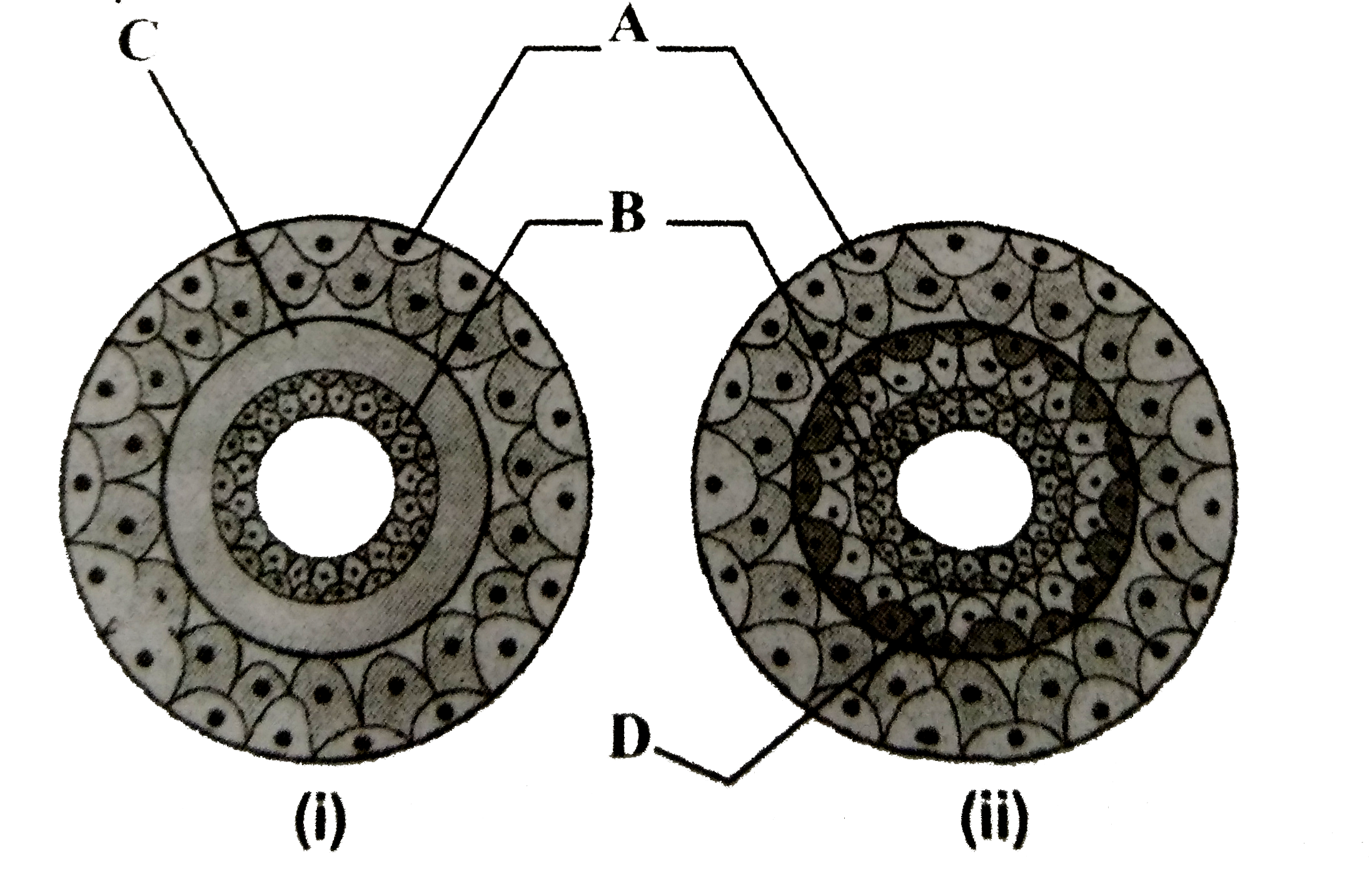An animal having triploblastic acoelomic condition is
Ascaris
Periplaneta
Planaria
Sycon.
The correct Answer is:C
To determine which animal has a triploblastic acoelomic condition, we can follow these steps:
Step 1: Understand the Terms
- Triploblastic: This refers to animals that have three germ layers: ectoderm, mesoderm, and endoderm.
- Acoelomic: This refers to animals that do not have a body cavity (coelom) between the digestive tract and the outer body wall.
Step 2: Analyze the Options
- Ascaris: This is a nematode (roundworm) and is triploblastic but has a pseudocoelom (not acoelomic).
- Periplaneta: This is a cockroach (insect) from the phylum Arthropoda. It is also triploblastic but has a true coelom.
- Planaria: This is a flatworm from the phylum Platyhelminthes. It is triploblastic and is known to be acoelomic.
- Cyclone: This is likely a typo or misinterpretation, but if referring to a member of the phylum Cnidaria (like a jellyfish), they are typically diploblastic.
Step 3: Identify the Correct Answer
From the analysis:
- The only option that is both triploblastic and acoelomic is Planaria (option C).
Conclusion
Thus, the animal having a triploblastic acoelomic condition is Planaria (option C).
---
- Triploblastic: This refers to animals that have three germ layers: ectoderm, mesoderm, and endoderm.
- Acoelomic: This refers to animals that do not have a body cavity (coelom) between the digestive tract and the outer body wall.
- Ascaris: This is a nematode (roundworm) and is triploblastic but has a pseudocoelom (not acoelomic).
- Periplaneta: This is a cockroach (insect) from the phylum Arthropoda. It is also triploblastic but has a true coelom.
- Planaria: This is a flatworm from the phylum Platyhelminthes. It is triploblastic and is known to be acoelomic.
- Cyclone: This is likely a typo or misinterpretation, but if referring to a member of the phylum Cnidaria (like a jellyfish), they are typically diploblastic.
From the analysis:
- The only option that is both triploblastic and acoelomic is Planaria (option C).
Thus, the animal having a triploblastic acoelomic condition is Planaria (option C).
Topper's Solved these Questions
- ANIMAL KINGDOMBOOK - CENGAGE BIOLOGY ENGLISHCHAPTER - ANIMAL KINGDOMEXERCISE - Exercise Assertion -Reasoning Questions
6 Videos
- ANIMAL KINGDOMBOOK - CENGAGE BIOLOGY ENGLISHCHAPTER - ANIMAL KINGDOMEXERCISE - Exercise Chordata
152 Videos
- ANATOMY OF FLOWERING PLANTS BOOK - CENGAGE BIOLOGY ENGLISHCHAPTER - ANATOMY OF FLOWERING PLANTS EXERCISE - ARCHIVES
38 Videos
- BIOMOLECULESBOOK - CENGAGE BIOLOGY ENGLISHCHAPTER - BIOMOLECULESEXERCISE - ARCHIVES
26 Videos
Similar Questions
Triploblastic animals show
View SolutionWhich of the following set of animals are triploblastic, true coelomates with open type circulatory system ?
View SolutionAll animals having feathers are
View SolutionWhich of the following are triploblastic, acoelomate with blind sac type of body plan, and parechyma cells originating from mesoderm fill up the cavities of the body ?
View SolutionWhich are the triploblastic acoelomate animals?
View SolutionWhat are the adaptations seen in animals that live in water scarcity conditions?
View SolutionAn animal having both exoskeleton and endoskeleton is
View SolutionExamine the figures of diploblastic (i) and triploblastic (ii) organisation in animals given below and identify the labelled parts A to D.

View SolutionRead the featured given below and select the option for animals which correctly describes the features mentioned:
I. All are exclusively marine, triploblastic, coelomate organism with a water vascular system.
II. A small group of warm-like marine animals with the organ system levels of the organization.
III. The body is covered by a calcareous shell and is unsegmented with a distinct head, muscular foot, and visceral hump.
IV. Triploblastic, pesudocelomate animals in
which alimentary canal is complete with a well developed muscular pharynx.
View SolutionYou have discovered an animal having characters like, triploblastic, bilateral symmetry, coelomate, chitinous exoskeleton, head, thorax and abdomen as bidy parts, and jointed appendages.
You should place the animal under
View Solution
